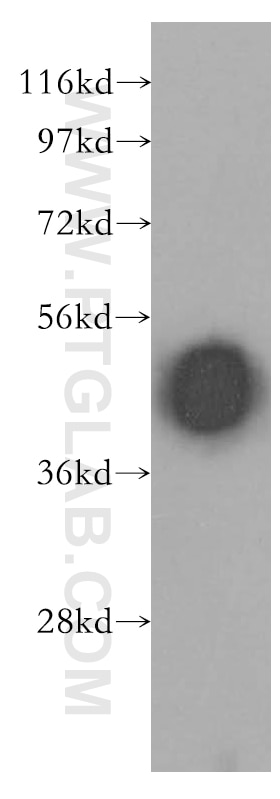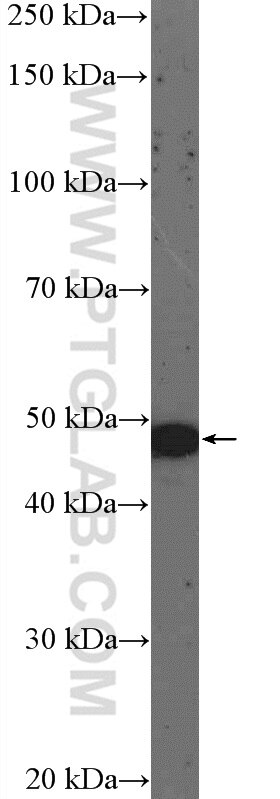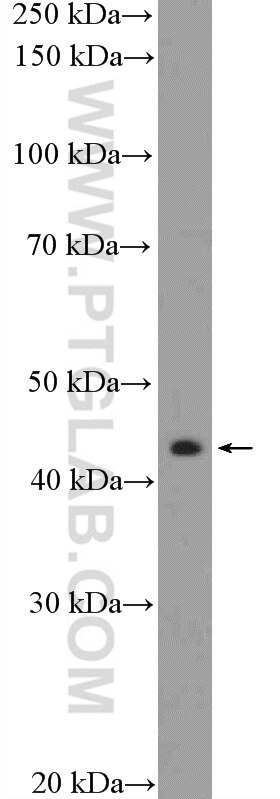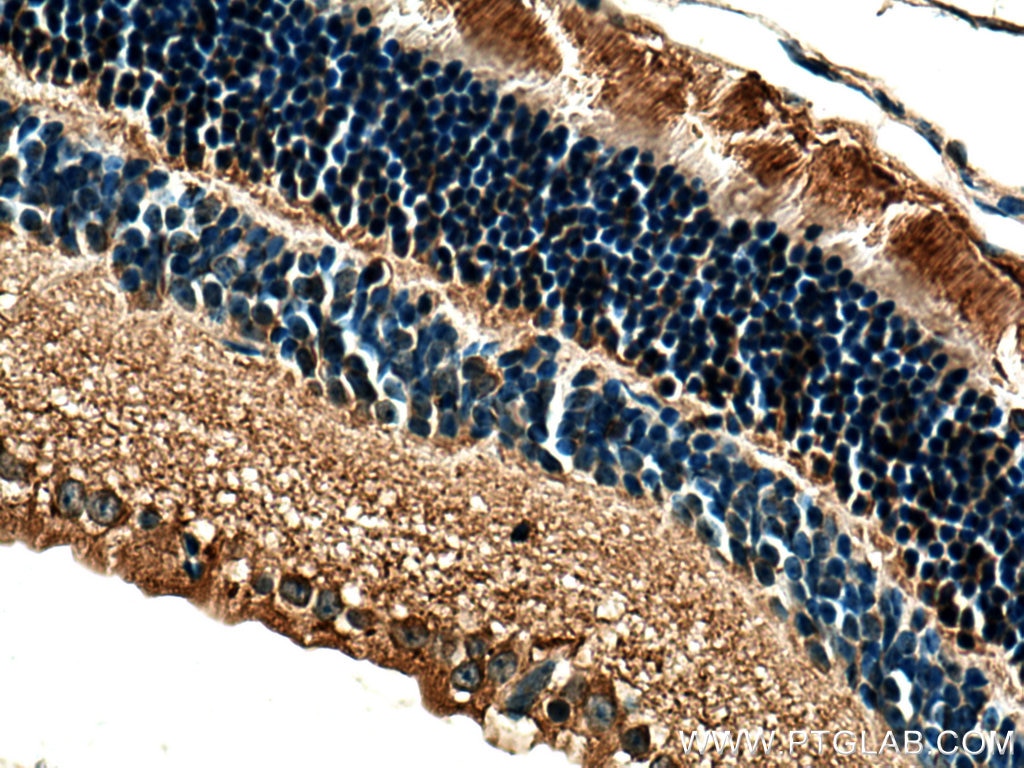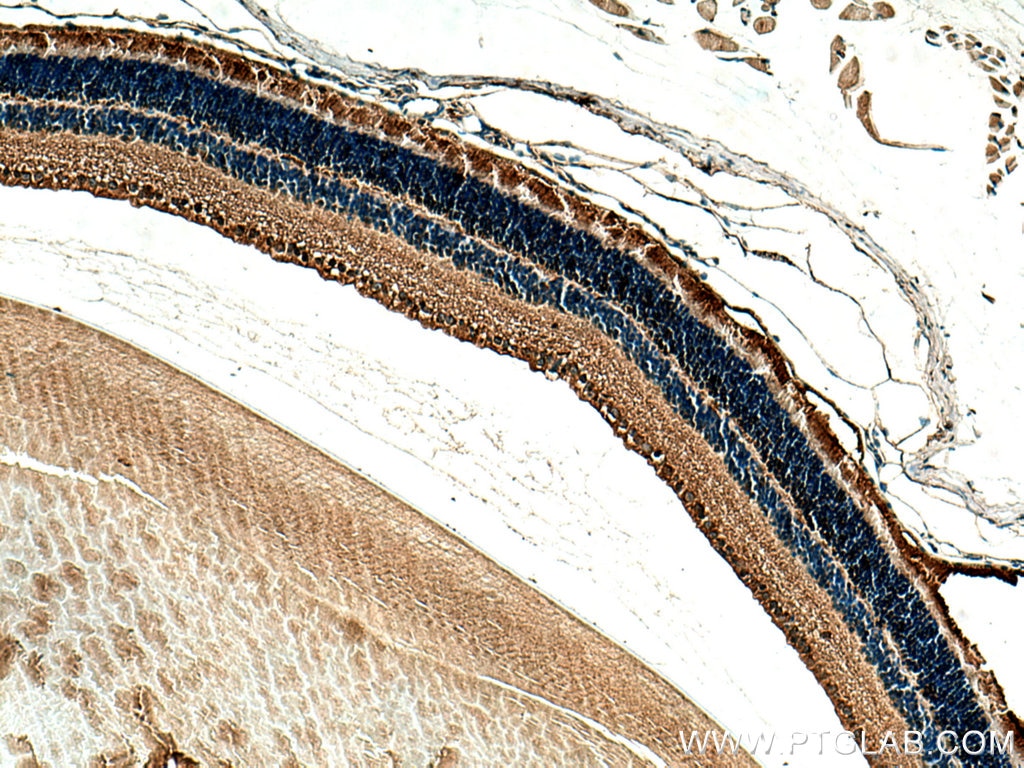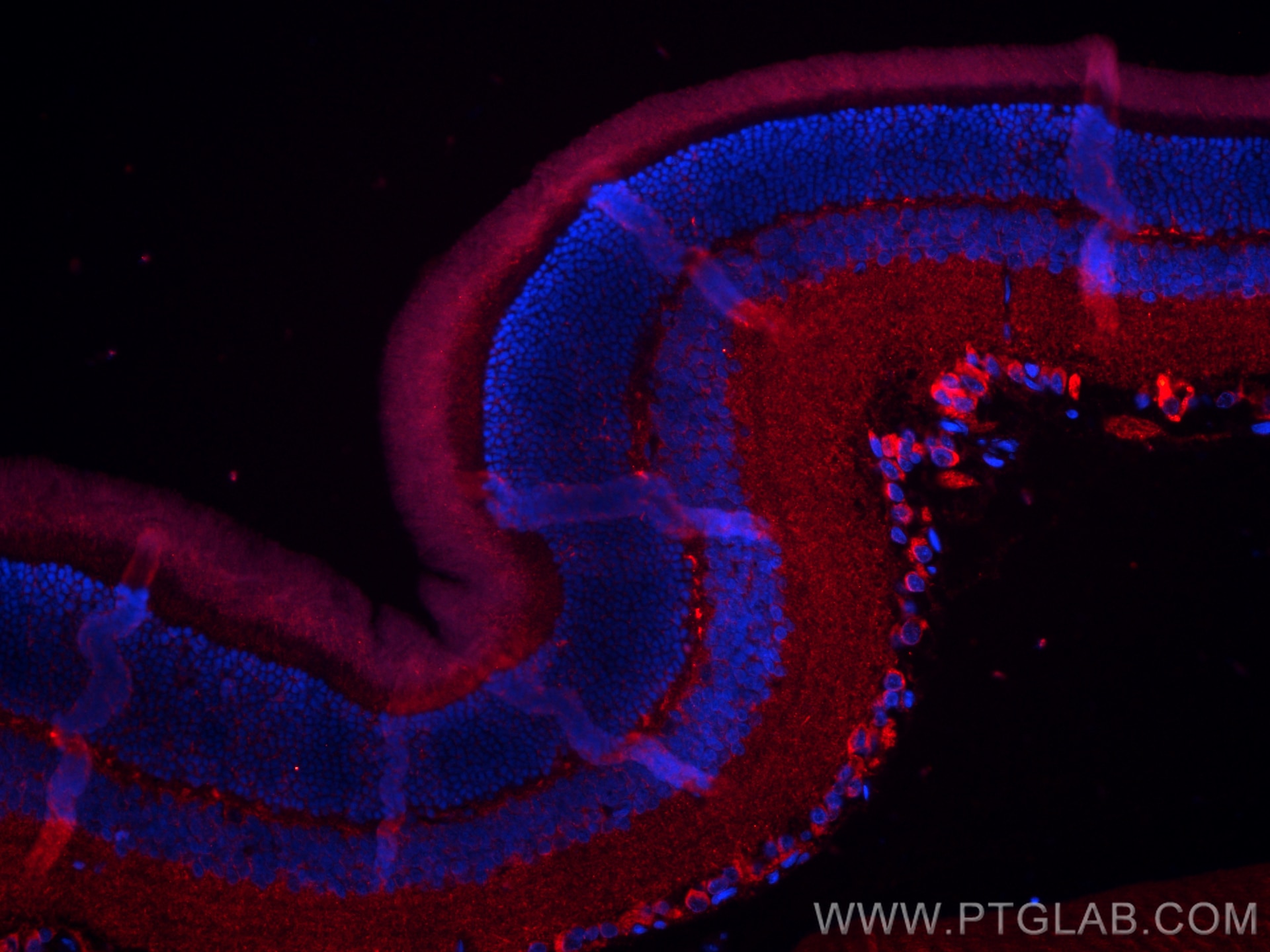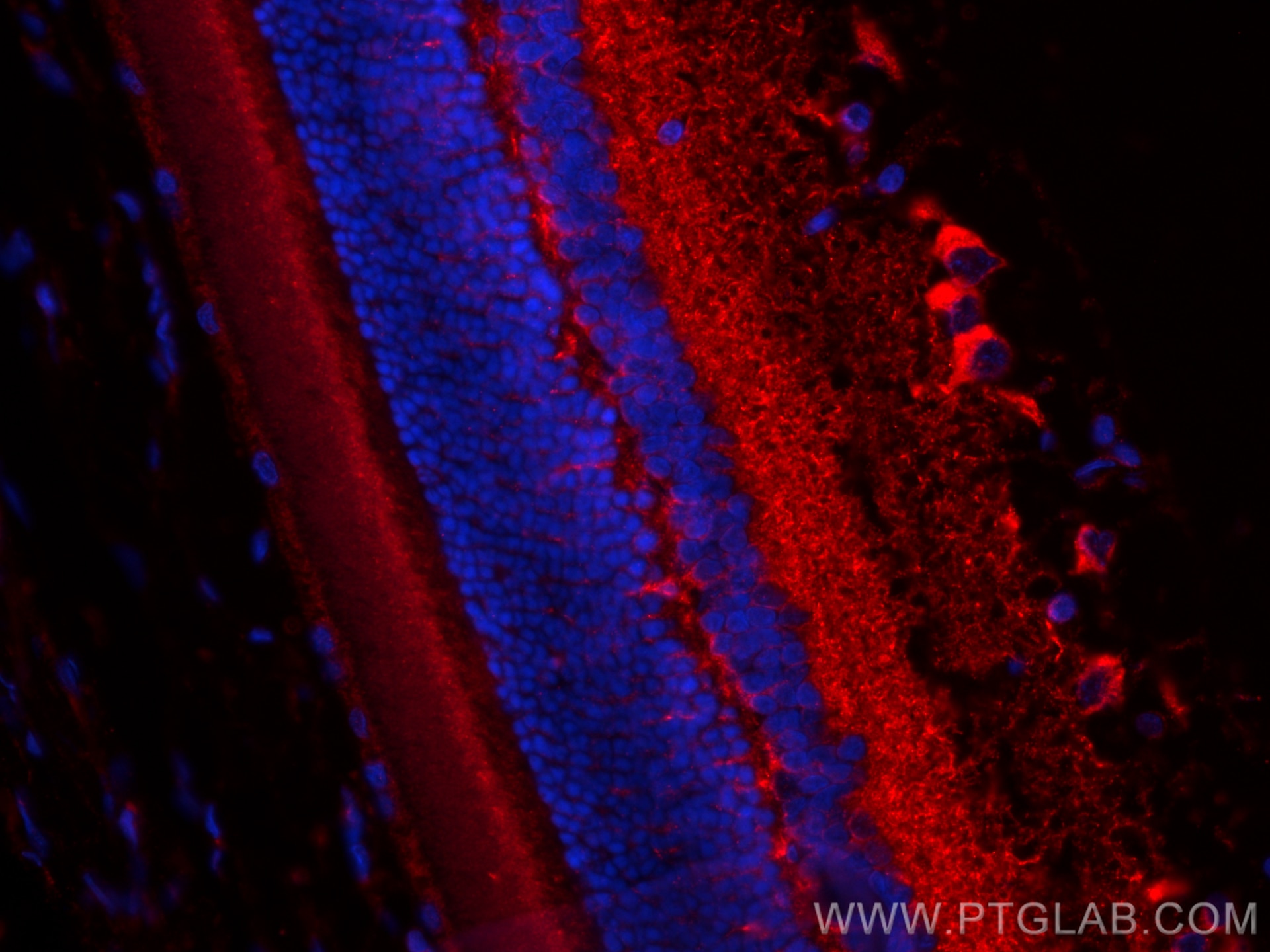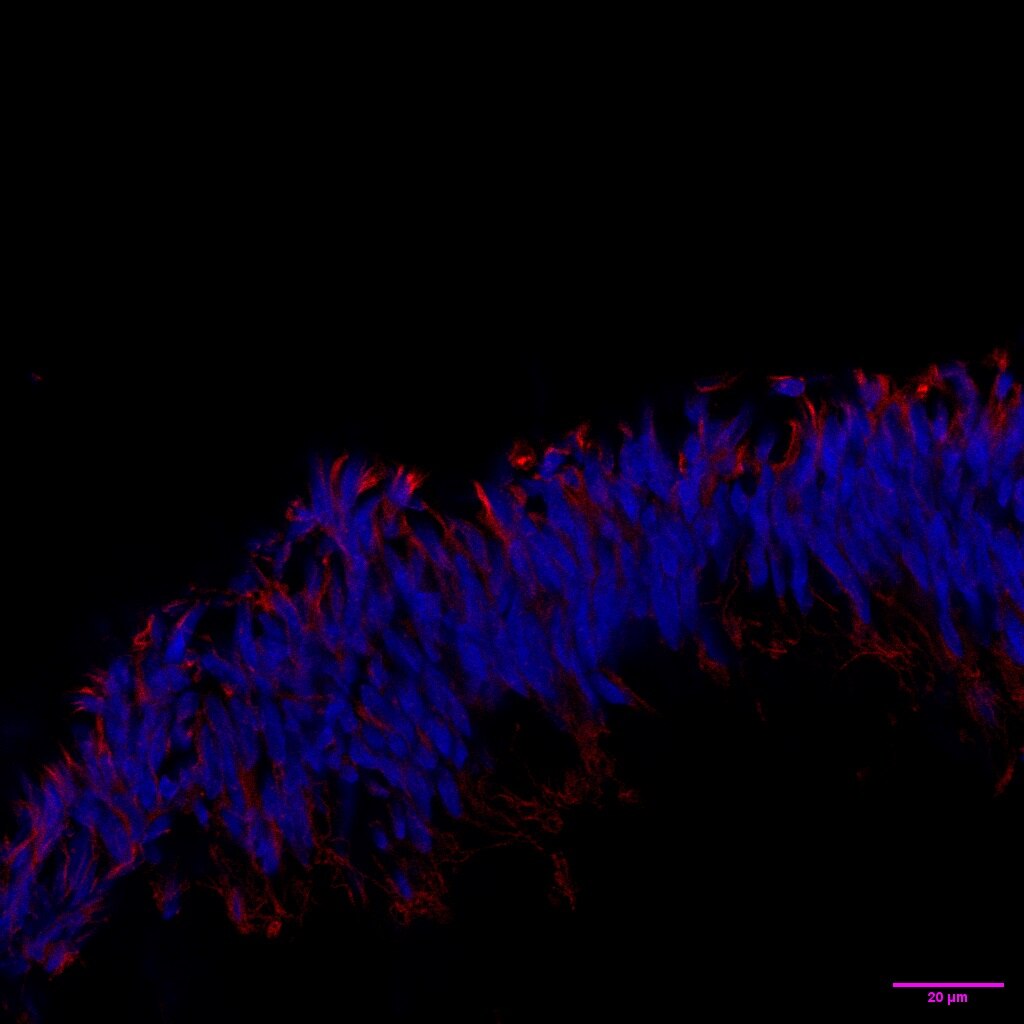Tested Applications
| Positive WB detected in | human brain tissue, mouse eye tissue, mouse heart tissue |
| Positive IHC detected in | mouse eye tissue Note: suggested antigen retrieval with TE buffer pH 9.0; (*) Alternatively, antigen retrieval may be performed with citrate buffer pH 6.0 |
| Positive IF detected in | Retinal organoids, mouse eye tissue |
Recommended dilution
| Application | Dilution |
|---|---|
| Western Blot (WB) | WB : 1:500-1:1000 |
| Immunohistochemistry (IHC) | IHC : 1:50-1:500 |
| Immunofluorescence (IF) | IF : 1:10-1:100 |
| It is recommended that this reagent should be titrated in each testing system to obtain optimal results. | |
| Sample-dependent, Check data in validation data gallery. | |
Published Applications
| WB | See 1 publications below |
| IHC | See 5 publications below |
| IF | See 1 publications below |
Product Information
11100-2-AP targets Arrestin C in WB, IHC, IF, ELISA applications and shows reactivity with human, mouse, rat samples.
| Tested Reactivity | human, mouse, rat |
| Cited Reactivity | human, mouse |
| Host / Isotype | Rabbit / IgG |
| Class | Polyclonal |
| Type | Antibody |
| Immunogen | Arrestin C fusion protein Ag1580 Predict reactive species |
| Full Name | arrestin 3, retinal (X-arrestin) |
| Calculated Molecular Weight | 43 kDa |
| Observed Molecular Weight | 43 kDa |
| GenBank Accession Number | BC012096 |
| Gene Symbol | Arrestin C |
| Gene ID (NCBI) | 407 |
| RRID | AB_2289959 |
| Conjugate | Unconjugated |
| Form | Liquid |
| Purification Method | Antigen affinity purification |
| UNIPROT ID | P36575 |
| Storage Buffer | PBS with 0.02% sodium azide and 50% glycerol , pH 7.3 |
| Storage Conditions | Store at -20°C. Stable for one year after shipment. Aliquoting is unnecessary for -20oC storage. 20ul sizes contain 0.1% BSA. |
Background Information
Arrestin C, also known as Arrestin 3 or Retinal Cone Arrestin, is a protein encoded by the ARR3 gene. It belongs to the arrestin family, which plays a crucial role in regulating G-protein-coupled receptor (GPCR) signaling and trafficking. Arrestin C is composed of two major domains: the N-domain and the C-domain, connected by a hinge region. These domains form a structure resembling two clamshells placed end-to-end. The C-terminal tail (C-tail) of Arrestin C interacts extensively with the N-domain, stabilizing its basal conformation. Arrestin C is predominantly expressed in cone photoreceptors and pinealocytes in the retina. It is involved in the shut-off mechanisms associated with high-acuity color vision by binding to phosphorylated and activated opsins, thereby inhibiting their ability to interact with transducin.
Protocols
| Product Specific Protocols | |
|---|---|
| WB protocol for Arrestin C antibody 11100-2-AP | Download protocol |
| IHC protocol for Arrestin C antibody 11100-2-AP | Download protocol |
| IF protocol for Arrestin C antibody 11100-2-AP | Download protocol |
| Standard Protocols | |
|---|---|
| Click here to view our Standard Protocols |
Publications
| Species | Application | Title |
|---|---|---|
Nat Commun A high-risk retinoblastoma subtype with stemness features, dedifferentiated cone states and neuronal/ganglion cell gene expression. | ||
Cancers (Basel) Clinical, Genomic, and Pharmacological Study of MYCN-Amplified RB1 Wild-Type Metastatic Retinoblastoma. | ||
Int J Mol Sci Tridimensional Retinoblastoma Cultures as Vitreous Seeds Models for Live-Cell Imaging of Chemotherapy Penetration. | ||
Front Mol Neurosci A mouse model of cone photoreceptor function loss (cpfl9) with degeneration due to a mutation in Gucy2e | ||
Pediatr Blood Cancer Immunohistochemical expression of TFF1 is a marker of poor prognosis in retinoblastoma | ||
Invest Ophthalmol Vis Sci Establishment and Comprehensive Characterization of a Novel Preclinical Platform of Metastatic Retinoblastoma for Therapeutic Developments |
Reviews
The reviews below have been submitted by verified Proteintech customers who received an incentive for providing their feedback.
FH Alessandro (Verified Customer) (01-19-2023) | great outcome, no unspecific staining
|
